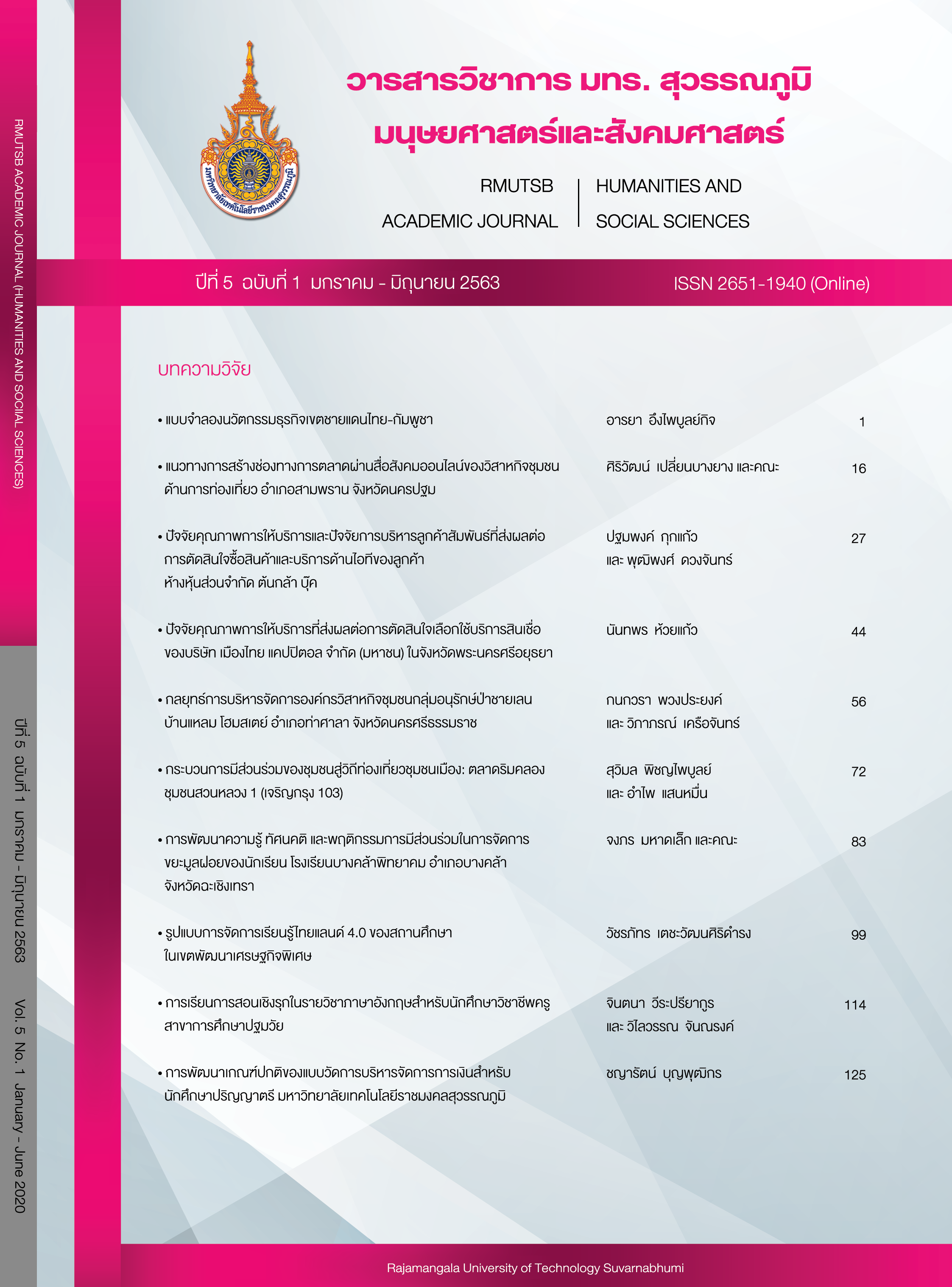Active learning in English for early childhood teacher course, early childhood education program
Main Article Content
Abstract
The transition into the 21st century results in almost all professions being called as e-careers (electronic) or online careers. Early childhood education is another profession that has a potential for being an e-teacher. Therefore, this quantitative research approach was focused on analyzing the possibilities for the early childhood education program students to develop an active-teaching style in English language courses. The research was conducted by surveying, design and analyzing with online media: blogger.com, Google classroom, Facebook group, and YouTube. Forty-one third year undergraduate students major in early childhood education from the faculty of education participated as the experimental group for this research. They were tested with 32 item questionnaires. All data were analyzed by descriptive statistics. The research found that there is a possibility for active-teaching through online media which can integrate many activities. Blogger.com, Google Classroom and Facebook group, all consisted of five elements, while YouTube consisted of one element. The results of the active-teaching method through the online media Facebook group and blogger.com pointed out that the efficiency of teaching was 100 percent, while YouTube and Google classrooms were found to be effective at 50 and 45 percent, respectively. The research results showed that the effectiveness of active-teaching through online media depends on the instructor. Moreover, the effectiveness of English learning and teaching the 21st century through online media depends largely on the support and understanding of the school administrator and the educational institution.
Article Details
References
Bonwell, C. C., & Eison, J. A. (1991). Active learning: Creating excitement in the classroom. ASHE-ERIC Higher Education Reports No.1, Washington D.C.: The George Washington University.
Chickering, A. W., & Gamson, Z. F. (1987). Seven principles for good practice in undergraduate education. AAHE bulletin, 39(7), 3-7.
Comenius, J. A., & Keatinge, M. W. (1967). The great didactic of John Amos Comenius. New York: Russell & Russell.
Fink, L. D. (1999). Active learning. Reprinted with permission of the University of Oklahoma Instructional Development Program. Retrieved 3 September 2016, from http://www.trincoll.edu/Academics/centers/teaching/Documents/Week3ActiveLearning.pdf
Meyers, C., & Jones, T. B. (1993). Promoting active learning: Strategies for the college classroom. San Francisco: Jossey-Bass.
Ministry of Education. Office of the Education Council. (2005). Standard on child rearing under 3 year of age. Retrieved 20 December 2018, from http://www.onec.go.th/index.php/book/BookView/407 (in Thai)
Ministry of Education. (2013) Care and education for early childhood. Retrieved 20 December 2018, from http://www.onec.go.th/index.php/book/Book View/1239 (in Thai)
Shenker, J. I., Goss, S. A., & Bernstein, D. A. (1996) Instructor’s resource manual for psychology. Boston: Houghton-Mifflin.
Sweller, J. (2006). The worked example effect and human cognition. Learning and Instruction, 16, 165-169.
Tositrakun, S. (2007) Khunying Bencha Saengli: Master of Thai Kindergarten Education in the Memorial of His Majesty the King at Wat Makutkasatriyaram (9 July 2007). Bangkok: RukLuke Family Group. (in Thai)
Ward, R. (1998). Active, collaborative and case-based learning with computer-based case scenarios. Computers & Education, 30, 103-110.


